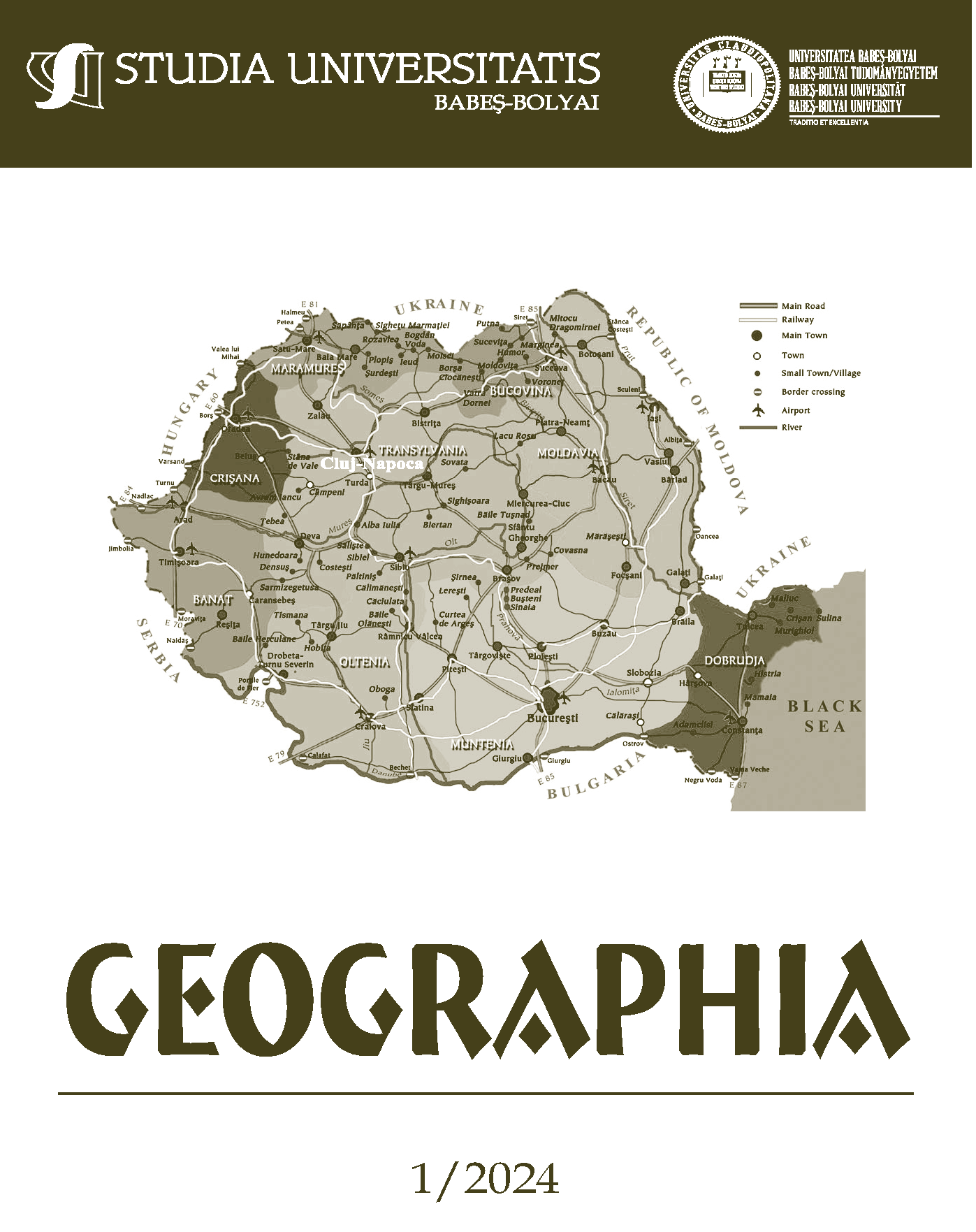The Natural Potential as a Premise for the Development of Tourism in Dâmbovița County, Romania
DOI:
https://doi.org/10.24193/subbgeogr.2024.1.08Keywords:
natural potential, tourist potential, Dâmbovița County, monuments and natural heritage reservesAbstract
The Natural Potential as a Premise for the Development of Tourism in Dâmbovița County, Romania. The tourism potential of a region is influenced by all the specific elements of the natural and man-made environment. A region can be integrated into the tourist circuit if it has a series of natural and anthropogenic resources that can be exploited (Bacal, Cocoș 2012). In this paper we have approached the natural resources specific to Dâmbovița County by analysing the following types of tourism potential: geology, relief, climate, water, biogeography and nature reserves. Dâmbovița County has a diversity of mountain, hilly and lowland landscapes that provide a varied habitat for a wide range of biotic species, which creates a significant tourism potential linked to the biogeographical components. The mountainous area of the county, including Bucegi Natural Park, is a major attraction for ecotourism and wildlife watching. The emblematic fauna of the Carpathians and thus of Dâmbovița County includes the black goat (Rupicapra rupicapra), frequently found on high ridges, the brown bear (Ursus arctos), important for forest ecosystems, and the Carpathian red deer (Cervus elaphus), present in forests. The county of Dâmbovița has a significant natural potential, which has not yet been capitalized. In this sense the development of tourism infrastructure in Dâmbovița County is essential for attracting tourists and for the economic growth of Dâmbovița County.
References
Anuarul Statistic al Județului Dâmbovița (2024), Institutul Național de Statistică. https://dambovita.insse.ro/produse-si-servicii/publicatii-statistice/anuarul-statistic-al-judetului/.
Bacal, P., and Cocoș, I. (2012), Geografia turismului, Academia de Studii Economice a Moldovei. Catedra de Gândire Economică, Demografie și Geoeconomie. http://www.ase.md/files/catedre/geo/bacal_geoturism.pdf.
Bhattacherjee, A. (2012), Social Science Research: Principles, Methods, and Practices, Textbooks Collection. Book 3.
Cândea, M., Simon, T., and Bogan, E., (2012), Patrimoniul Turistic al României, Editura Universitară, București.
Cozmanca, O. (coord.) (1994), Județele și Orașele României în cifre și fapte, Volumul I Județele României, Departamentul pentru Administrația Publică Locală, București.
Dumitrescu, D., Baltălungă, A. and Iancu, A. (2012), Niche Tourism in Dambovita County - Opportunities and Perspectives, Issue 1, Vol. 6. http://www.naun.org/main/NAUN/energyenvironment/17-697.pdf.
Giurescu, D. C. (2003), Istoria României în date, Editura Enciclopedică, București.
Ielenicz, M. and Comănescu, L. (2006), România: Potențial turistic, Editura Universitară, București.
Law 5 of 6 March 2000 (updated). https://legislatie.just.ro/Public/DetaliiDocument/21860.
Mayring, P. (2014), Qualitative content analysis: theoretical foundation, basic procedures and software solution, Klagenfurt. https://nbn-resolving.org/urn:nbn:de:0168-ssoar-395173.
Turcu, D., and Weisz, J. (2008), Economia Turismului, Editura Eurostampa, Timişoara.
Downloads
Published
How to Cite
Issue
Section
License
Copyright (c) 2024 Studia Universitatis Babeș-Bolyai Geographia

This work is licensed under a Creative Commons Attribution-NonCommercial-NoDerivatives 4.0 International License.





 ©Studia Universitatis Babeş-Bolyai Geographia. Published by Babeș-Bolyai University.
©Studia Universitatis Babeş-Bolyai Geographia. Published by Babeș-Bolyai University.